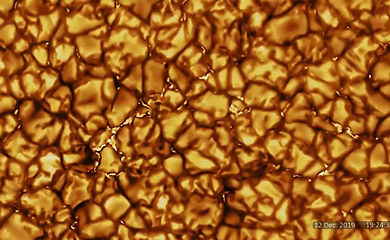Physics Stuff
Odds and Ends for the Classroom and Beyond
Some answers, useful resources and more questions.

Here is a Concept Map that captures much of the syllabus content of Mechanics from KS2-5 providing context of where these studies will lead to in university and on what philosophical assumptions the theories are laid.
Some thoughts on the Life and the Universe
The most general of relativistic views is one in which space-time itself is a primitive field (which nevertheless presumably receives the all-pervading Higgs boson field). In these general space-time theories (at least) we can say that the lesser primitive fields are the realisation of the principle of locality: interaction is continuously local in that it is manifested and mediated by the interplay between fields.
Within the most fundamental reductionist settings of quantum gravity it appears to acquire meaning beyond that of a convenient mathematical construct. Within this setting the Higgs boson (scalar) field that pervades all of space-time giving rise to the rest mass of both fermionic particles and force mediating bosonic fields is still less primitive than the space-time field itself.
Which if both fields take on the mantle of the old aether and is the locality motivation of introducing the field concept in the first place lost in this interpretation?
Charge is to electromagentism as matter is to gravity and is another quality that matter has, an attitude like charisma as in a force of personality. Gavity which similarly varies inversely as distance is a billion billion billion billion times weaker than electromagnetism.
Our charge neutrality as humans is not to be taken for granted as the balance is so perfect and delicate that If you we're standing next to someone who had 1% more electrons than protons the mutual repulsion would be great enough to lift the weight of the earth.
Forces have a scale dependency in the sense that different forces dominate at different distances. The nuclear force falls off faster than inverse squared law that binds the nucleus. Feynmann in his lectures poses the question: What holds a negatively charged electron together since it has no nuclear forces? If the electrons made of one kind of substance then each part should repel the other parts. But does an electron have parts or is it really a point?
Schrodinger's view is that life is that which converts thermodynamic information contained in food or sunlight into complex and statistically unlikely configurations of matter. Information containing free energy flux reaches earth's biosphere in the form of sunlight. By passing through metabolic pathways of living organisms this information keeps the organisms away from that state of thermodynamic equilibrium that we call death. Some info is degraded to heat but natural selection ensures that much is preserved in the intricate structures characteristic of evolving life forms of increasing complexity, refinement and statistical improbability.
Every happening in nature means an increase in entropy of the part of the world where it is going on. A living organism thus continually increases its entropy or produces positive entropy which is death. It cannot only keep aloof by continually drawing negative entropy from the environment. The metabolism of organism succeeds in freeing itself from all the entropy it cannot help producing while it is alive. Organisms suck orderliness from their environment. Feeding off the well ordered states of matter in organic compounds which serve as foodstuffs. Plants have have their most powerful source of of negative entropy in form of sunlight.
Paul Dirac proposed a large number hypothesis:
Strength of gravity, as represented by gravitational constant, G is inversely proportional to the age of the universe
Mass of the universe is proportional to square of the universe's age.
In Newton’s law of gravitational force between two masses, m1 and m2, we assume that m1 is both the point "inertial" mass and the gravitational mass (of the earth say) with m2 that of the Sun.
We can do simple dimensional analysis to determine the size of the universe as can be done to determine the Planck mass, m_P ∼ (hc/G)^0.5 ≈ 2.17 × 10−8 kg. The Universe is approximately 13.7 billion years old (yet it is up to 80 billion light years across).
To determine gravitational and kinetic energy of the universe, information of the size and total mass of the universe are needed. There are different estimations of the mass of the universe spanning 3×10^50 kg to 1.6 × 10^60 kg.
If we want to relate the mass of the universe to the fundamental "parameters" of the theory of the size of the universe:
1. Gravitational constant G, [kg^-1m^3s^-2 ]
2. Speed of the light c [ms^-1]
3. Hubble constant H ≈ 70 km s^(−1) Mps ^-1 .By means of these parameters, a mass dimension quantity, m related to the universe can be constructed:
m_U=k c^iG^j H^k, with i=3, j=-1,k=-1, that is
m_U=C^3/(GH).
See the paper:



